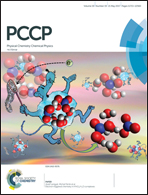Dynamical regimes of four oscillators with excitatory pulse coupling
Abstract
The dynamical regimes of four almost identical oscillators with pulsatile excitatory coupling have been studied theoretically with two models: a kinetic model of the Belousov–Zhabotinsky reaction and a phase-reduced model. Unidirectional coupling on a ring and all-to-all coupling have been considered. The time delay τ between the moments of a spike in one oscillator and a pulse perturbation of the other(s) plays a crucial role in the emergence of the dynamical modes, which are classified as regular, complex, and OS (oscillation-suppression)-modes. The regular modes, in which each oscillator gives only one spike during the period T, consist of the modes in which the period T is linearly dependent on τ and modes in which T is almost independent of τ. The τ-dependent and τ-independent modes alternate if τ increases. A unique sequence of modes observed at growing τ is the same for all types of connectivity and even for both excitatory and inhibitory coupling. For unidirectional coupling, the analytical dependence of T on τ is found for all regular modes. Multirhythmicity is observed at large values of the coupling strength Cex. The effect of small frequency dispersion (within a few percents) on the stability of the regular modes has been studied. Unusual modes like bursting or heteroclinic switching are found in narrow regions of the Cex–τ plane between the regular modes.



 Please wait while we load your content...
Please wait while we load your content...